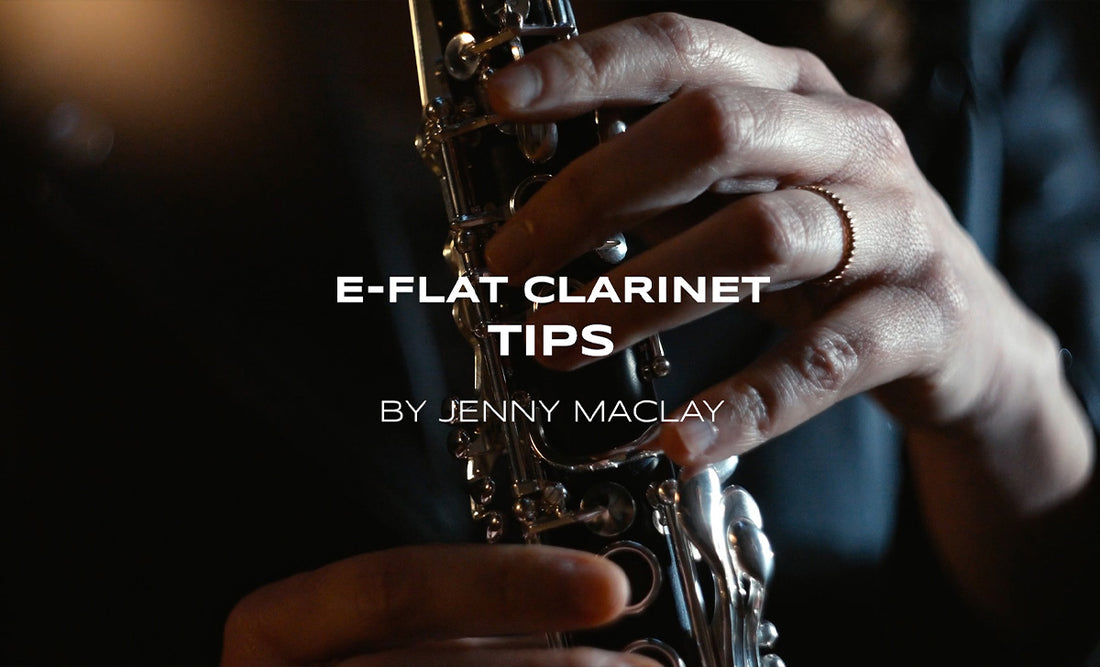Clarinet soloist, recitalist, orchestral player, chamber musician, pedagogue and blogger, Jenny Maclay gives you her tips for getting started on the E-flat clarinet!
Tips for starting the E-flat clarinet

Tip #1: Start Slow
Start by playing very slow scales and long tones. That way, your fingers can get used to the keywork, which is much smaller than on other clarinets. Doing long tones will also help you to work with a tuner to get used to the tuning tendencies of the Eb clarinet.
Tip #2: Create your own fingerings
High notes are quite common for the E-flat clarinet, and cause difficulties for many of us. A lot of times, the altissimo notes and the traditional fingerings of the E flat clarinet do not have the same tuning capabilities that they do on the B flat or A clarinet. Do not hesitate to consult fingering charts, but also to create your own fingerings.
If a fingering works well but sounds a bit flat, you can add the sliver key of the right-hand to raise the pitch a bit.
Tip #3: Choose your equipment wisely
Make sure you have a very good mouthpiece, ligature and reed combination, this plays a crucial role in sound and ease of response. It is often helpful to try several combinations to find the one that works best for you.
Tip #4: Use enough air
This is essential advice, which applies to all types of clarinet: make sure to use enough air. Play loud, play proud and have fun!
► Discover Jenny Maclay's blog
► Go to her artist page
► Discover the E-flat Muse clarinet